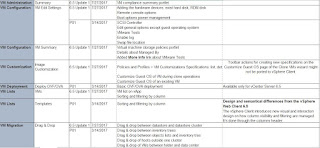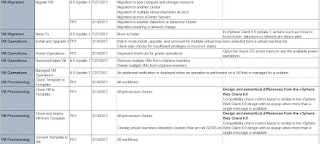VMware Site Recovery brings VMware enterprise-class Software-Defined Data Center (SDDC) Disaster Recovery as a Service to the AWS Cloud. It enables customers to protect and recover applications without the requirement for a dedicated secondary site. It is delivered, sold, supported, maintained and managed by VMware as an on-demand service.
IT teams manage their cloud-based resources with familiar VMware tools—without the difficulties of learning new skills or utilizing new tools.
Auto-discovery of on-premises infrastructure by connecting directly to VMware's vSphere server virtualization platform; a simplified policy engine that provides recovery points and recovery times ranging between one and 24 hours; and failback that brings only modified application data back to a primary site from an AWS disaster recovery site.
VMware Site Recovery is an add-on feature to VMware Cloud on AWS, powered by VMware Cloud Foundation. VMware Cloud on AWS integrates VMware’s flagship compute, storage, and network virtualization products—VMware vSphere, VMware vSAN TM , and VMware NSX—along with VMware vCenter Server management. It optimizes them to run on elastic, bare-metal AWS infrastructure. With the same architecture and operational experience on-premises and in the cloud, IT teams can now get instant business value via the AWS and VMware hybrid cloud experience.
VMware Site Recovery extends VMware Cloud on AWS to provide a managed disaster recovery, disaster avoidance and non-disruptive testing capabilities to VMware customers without the need for a secondary site, or complex configuration.
VMware Site Recovery works in conjunction with VMware Site Recovery Manager 8.0 and VMware vSphere Replication 8.0 to automate the process of recovering, testing, re-protecting, and failing-back virtual machine workloads.
VMware Site Recovery utilizes VMware Site Recovery Manager servers to coordinate the operations of the VMware SDDC. This is so that as virtual machines at the protected site are shut down, copies of these virtual machines at the recovery site startup. By using the data replicated from the protected site these virtual machines assume responsibility for providing the same services.
VMware Site Recovery can be used between a customer’s datacenter and an SDDC deployed on VMware Cloud on AWS or it can be used between two SDDCs deployed to different AWS availability zones or regions. The second option allows VMware Site Recovery to provide a fully VMware managed and maintained Disaster Recovery solution.
Features and Benefits of VMware Site Recovery
- Provides familiar features and functionality with enhanced workflows to reduce time to protection and risk
- An easy to use disaster recovery/secondary site that is supported and maintained by VMware. This lowers capital costs and makes it easier to protect more virtual machines faster.
- Application-agnostic protection eliminates the need for app-specific point solutions
- Automated orchestration of site failover and failback with a single-click reduces recovery times
- Frequent, non-disruptive testing of recovery plans ensures highly predictable recovery objectives
- Enhanced, easy to use, consolidated protection workflow simplifies replicating and protecting virtual machines
- Centralized management of recovery plans from the vSphere Web Client replaces manual runbooks
- vSphere Replication integration delivers VM-centric, replication that eliminates dependence on a particular type of storage
- Flexible versioning allows for easier upgrades and ongoing management
VMware Site Recovery is deployed in a paired configuration, for example, protected/customer site and recovery/VMware Cloud on AWS site. This document will use the two terms interchangeably because either the customer site or VMware Cloud on AWS site can be either the protected or recovery sites.
VMware Site Recovery utilizes VMware Site Recovery Manager and vSphere Replication. For the VMware Cloud on AWS instance, this software is automatically installed and configured by VMware when the add-on is enabled. For the customer site, VMware Site Recovery Manager is installed on a Microsoft Windows server and vSphere Replication is deployed as an appliance, both by the customer. VMware Site Recovery requires a VMware vCenter Server at the customer site as well. The customer site vCenter can be running either VMware vCenter Server version 6.0 U3 or 6.5. There must be one or more vSphere hosts running version 5.0 or higher at the customer site. VMware Site Recovery utilizes vSphere Replication for transferring data between sites.
VMware Site Recovery and VMware vCenter Server as well as the workloads they are protecting require infrastructure services like DNS, DHCP and Active Directory. These must be in place at both the protected and recovery sites.
I hope this has been informative and thank you for reading!
































